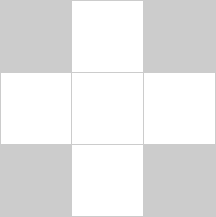
i
i
i
i
i
i
i
i
4
Ray Tracing
One of the basic tasks of computer graphics is rendering three-dimensional ob-
jects: taking a scene, or model, composed of many geometric objects arranged
in 3D space and producing a 2D image that shows the objects as viewed from
a particular viewpoint. It is the same operation that has been done for centuries
by architects and engineers creating drawings to communicate their designs to
others.
Fundamentally, rendering is a process that takesas its input a set of objects and
produces as its output an array of pixels. One way or another, rendering involves
If the output is a vector
image rather than a raster
image, rendering doesn’t
have to involve pixels, but
we’ll assume raster images
in this book.
considering how each object contributes to each pixel; it can be organized in two
general ways. In object-order rendering, each object is considered in turn, and
for each object all the pixels that it influences are found and updated. In image-
order rendering, each pixel is considered in turn, and for each pixel all the objects
that influence it are found and the pixel value is computed. You can think of
the difference in terms of the nesting of loops: in image-order rendering the “for
each pixel” loop is on the outside, whereas in object-order rendering the “for each
object” loop is on the outside.
Image-order and object-order rendering approaches can compute exactly the
same images, but they lend themselves to computing different kinds of effects
and have quite different performance characteristics. We’ll explore the compara-
In a ray tracer it is easy to
compute accurate shadows
and reflections, which are
awkward in the object-order
framework.
tive strengths of the approaches in Chapter 8 after we have discussed them both,
but, broadly speaking, image-order rendering is simpler to get working and more
flexible in the effects that can be produced, and usually (though not always) takes
much more execution time to produce a comparable image.
69

i
i
i
i
i
i
i
i
70 4. Ray Tracing
Figure 4.1. The ray is “traced” into the scene and the first object hit is the one seen through
the pixel. In this case, the triangle
T
2
is returned.
Ray tracing is an image-order algorithm for making renderings of 3D scenes,
and we’ll consider it first because it’s possible to get a ray tracer working with-
out developing any of the mathematical machinery that’s used for object-order
rendering.
4.1 The Basic Ray-Tracing Algorithm
A ray tracer works by computing one pixel at a time, and for each pixel the basic
task is to find the object that is seen at that pixel’s position in the image. Each
pixel “looks” in a different direction, and any object that is seen by a pixel must
intersect the viewing ray, a line that emanates from the viewpoint in the direction
that pixel is looking. The particular object we want is the one that intersects
the viewing ray nearest the camera, since it blocks the view of any other objects
behind it. Once that object is found, a shading computation uses the intersection
point, surface normal, and other information (depending on the desired type of
rendering) to determine the color of the pixel. This is shown in Figure 4.1, where
the ray intersects two triangles, but only the first triangle hit, T
2
, is shaded.
A basic ray tracer therefore has three parts:
1. ray generation, which computes the origin and direction of each pixel’s
viewing ray based on the camera geometry;
2. ray intersection,whichfinds the closest object intersecting the viewing ray;
3. shading, which computes the pixel color based on the results of ray inter-
section.
Get Fundamentals of Computer Graphics, 3rd Edition now with the O’Reilly learning platform.
O’Reilly members experience books, live events, courses curated by job role, and more from O’Reilly and nearly 200 top publishers.

